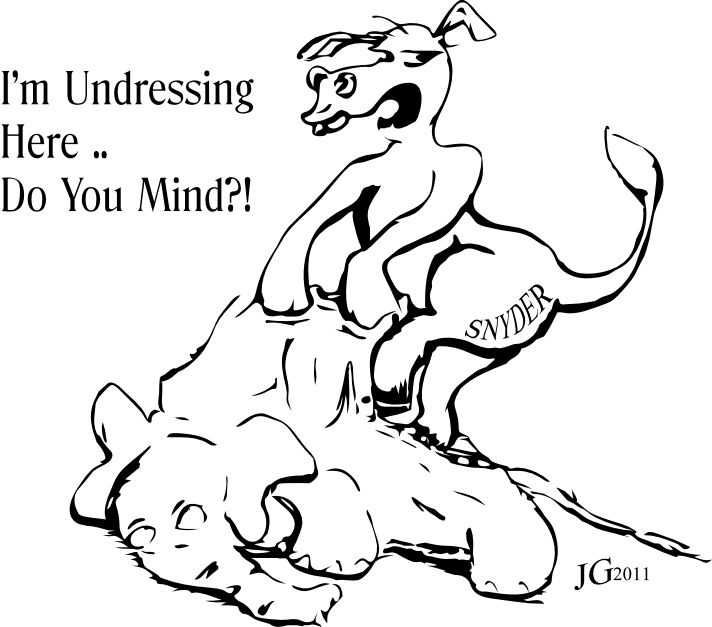
 |
NAVIGATION
|
NEWS TIPS!RightMichigan.com

Who are the NERD fund donors Mr Snyder?Tweets about "#RightMi, -YoungLibertyMI, -dennislennox,"

 |
The Real Eleventh AmendmentBy Kevin Rex Heine, Section News
What do you do with a duly ratified amendment to the U. S. Constitution that has not actually been added to the Constitution? What do you do if that amendment potentially renders unconstitutional a long-standing federal statute (that has been in place for about 91 years)? What do you do if that amendment, which was properly ratified 220 years ago, may have prevented the federal statute in question from having been enacted in the first place?
The Bill of Rights (Amendments I through X to the U. S. Constitution) were originally proposed as articles of amendment III through XII, but were the first ten ratified (ratification by Virginia on 15 December 1791 provided the necessary number of states to make the Bill of Rights effective). Article II, the Congressional Compensation Amendment, was eventually ratified in May of 1992 as the Twenty-Seventh Amendment to the Constitution. Article I, however, is still listed as a proposed amendment that has yet to be properly ratified (officially listed as "still pending" because no deadline was established for its ratification). Eleven states (New Jersey, Maryland, North Carolina, South Carolina, New Hampshire, New York, Rhode Island, Pennsylvania, Virginia, Vermont, and Kentucky) of the twelve necessary prior to February of 1803 had ratified Article the First, and that's where the matter officially stands; 27 more states would need to ratify this amendment in order for it to become effective.
Just so we're clear, the wording of the Congressional Apportionment Amendment is thus:
After the first enumeration required by the first article of the Constitution, there shall be one Representative for every thirty thousand, until the number shall amount to one hundred, after which the proportion shall be so regulated by Congress, that there shall be not less than one hundred Representatives, nor less than one Representative for every forty thousand persons, until the number of Representatives shall amount to two hundred; after which the proportion shall be so regulated by Congress, that there shall not be less than two hundred Representatives, nor more than one Representative for every fifty thousand persons. (emphasis in source) As written, and accounting for the current U. S. population, this would place a lower limit on the House of Representatives of 200 and an upper limit of about 6,165 (and at that upper limit could theoretically provide Michigan with a U. S. House delegation of 198). Of course, the Apportionment Act of 1911, reinforced by the Reapportionment Act of 1929 and the Apportionment Act of 1941, has capped the House delegation at 435 members, to be apportioned among the several states using the method of equal proportions. (The Apportionment Act of 1941 is significant in that it made the decennial apportionment process self-executing, lifting Congress' responsibility to pass an apportionment act every ten years.) But what if Article the First had actually been ratified by another state prior to Kentucky's ratification, thus making the Bluegrass State's ratification the one necessary to make the amendment effective? What if capping the House membership at 435 was unconstitutional (because the amendment may not permit a self-executing act that fixes the size of the House Delegation), and Congress actually had to do its job every ten years (or at least come up with a Standard Divisor that didn't violate the constitution)? You'll love this. Back in January of this year a document was found in the Connecticut State Archives in Hartford - evidently having been misfiled under "Revolutionary War Documents" - that is apparently a copy of Connecticut's ratification of Article the First, said ratification having taken place on May 10, 1790. This would mean that Kentucky's ratification on June 24, 1792, would have been the twelfth state to ratify the article, thus clearing the three-fourths hurdle specified in Article Five of the U. S. Constitution and making the Congressional Apportionment Amendment the original Amendment XI. Apparently, the Connecticut Legislature at the time failed to report their ratification of this amendment to Congress. But now that the documentation has been recovered and certified to be true, Article the First can be added to the Constitution as Amendment XXVIII, right? So why isn't it there? Good question. Apparently, there is now a case pending before the U. S. Third Circuit Court of Appeals (LaVergne v. Bryson) that would compel the proper federal authorities to add the Congressional Apportionment Amendment to the U. S. Constitution. If upheld - and, yes, this may yet go to the SCOTUS - then we are now looking at a constitutional amendment that, as written, places an upper and lower limit on size of the U. S. House of Representatives. Given the evidence, that Article the First ought to be added to the Constitution as Amendment XXVIII should be a foregone conclusion. This then raises the question of whether fixing the size of the House Delegation at 435 members is unconstitutional going forward. Granted, the current cap is between the two proposed limits, but would Congress actually be permitted to fix the size of the House, or would they be required to enter into the "standard devisor" debate every decennium? My argument would be that the amendment, as worded, requires Congress to regulate the size of the House, but does not permit them to fix it. While I don't agree with the concept of supersizing the congressional delegation (because 6,000+ congressional seats seems unwieldy . . . at best), the website Thirty-Thousand does a good job of making the case that the Founding Fathers' intent was not only that the congressional districts be the same size within each state, but also approximately the same size nationwide (in keeping with the "one person, one vote" standard). Thus, rather than a fixed number of House seats to apportion out (which produces district sizes that will necessarily vary), what should be happening is that the population of each state is divided up by a standard divisor (a standard district size) in order to produce congressional districts that are approximately the same size nationwide. Of course, if Congress wants to spare themselves endless debate on what to use as a standard devisor (and set up an auto-executing act that doesn't actually fix the size of the House), then it might help if they agreed upon a divisor that may vary from census to census, but will still remain fairly predictable . . . I propose the population of the District of Columbia. As I've shown on the chart linked here, dividing the 2010 population of each state by the 2010 population of the District of Columbia provides a House Delegation of 511 members, broken down as follows:
However, as fascinating as this discussion may be, until the court (or Congress itself) gets around to deciding that Article the First has in fact been properly ratified, it's no more useful than any other theoretical debate. Perhaps what we ought to be doing is pressuring Congress to actually add the Congressional Apportionment Amendment as Amendment XXVIII, and we can deal with the apportionment discussion later.

The Real Eleventh Amendment | 2 comments (2 topical, 0 hidden)
The Real Eleventh Amendment | 2 comments (2 topical, 0 hidden)
|
Related Links+ Bill of Rights+ Twenty-Sev enth Amendment + still pending + Congressio nal Apportionment Amendment + Apportionm ent Act of 1911 + Reapportio nment Act of 1929 + Article Five of the U. S. Constitution + LaVergne v. Bryson + Thirty-Tho usand + chart linked here + Also by Kevin Rex Heine |